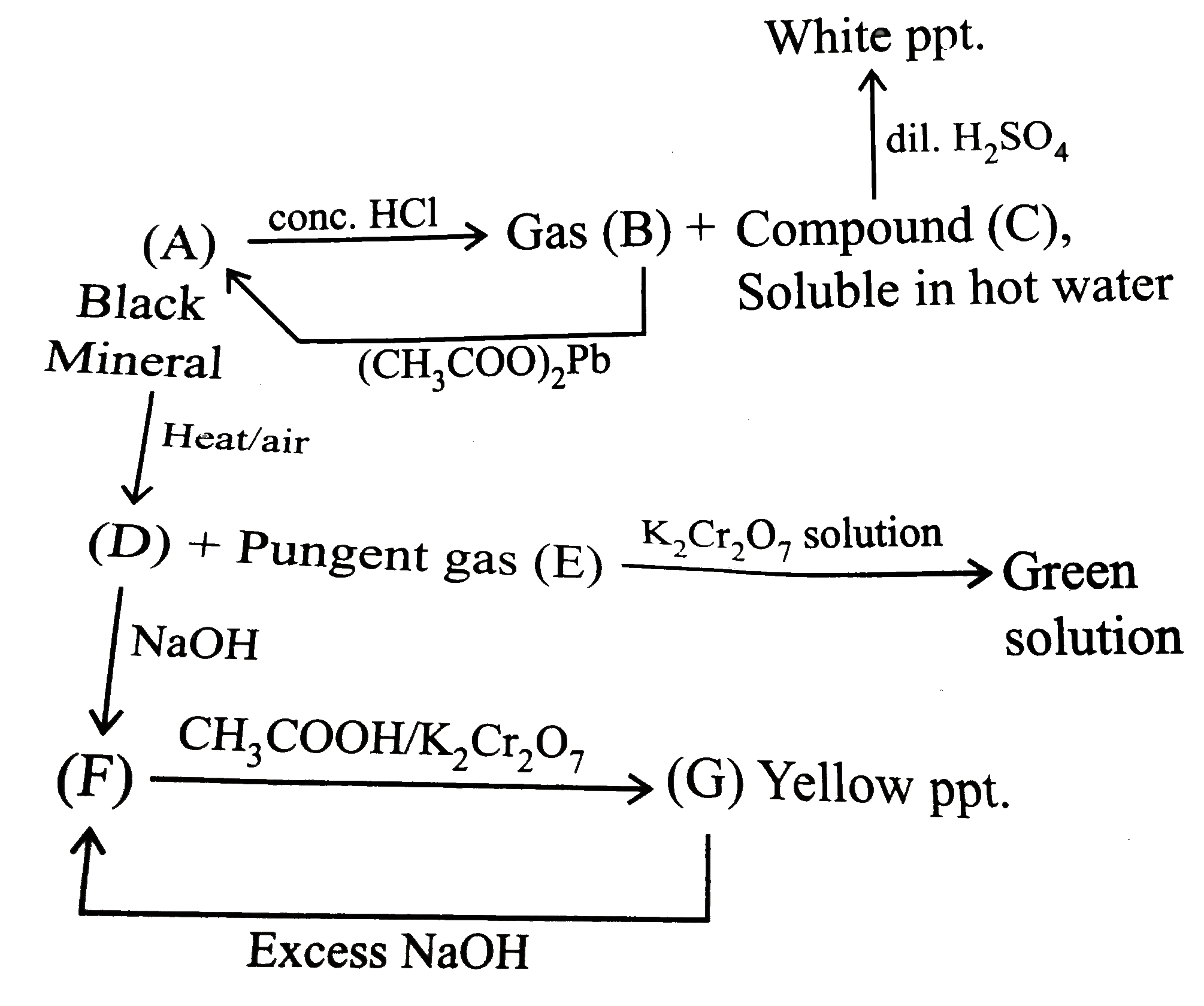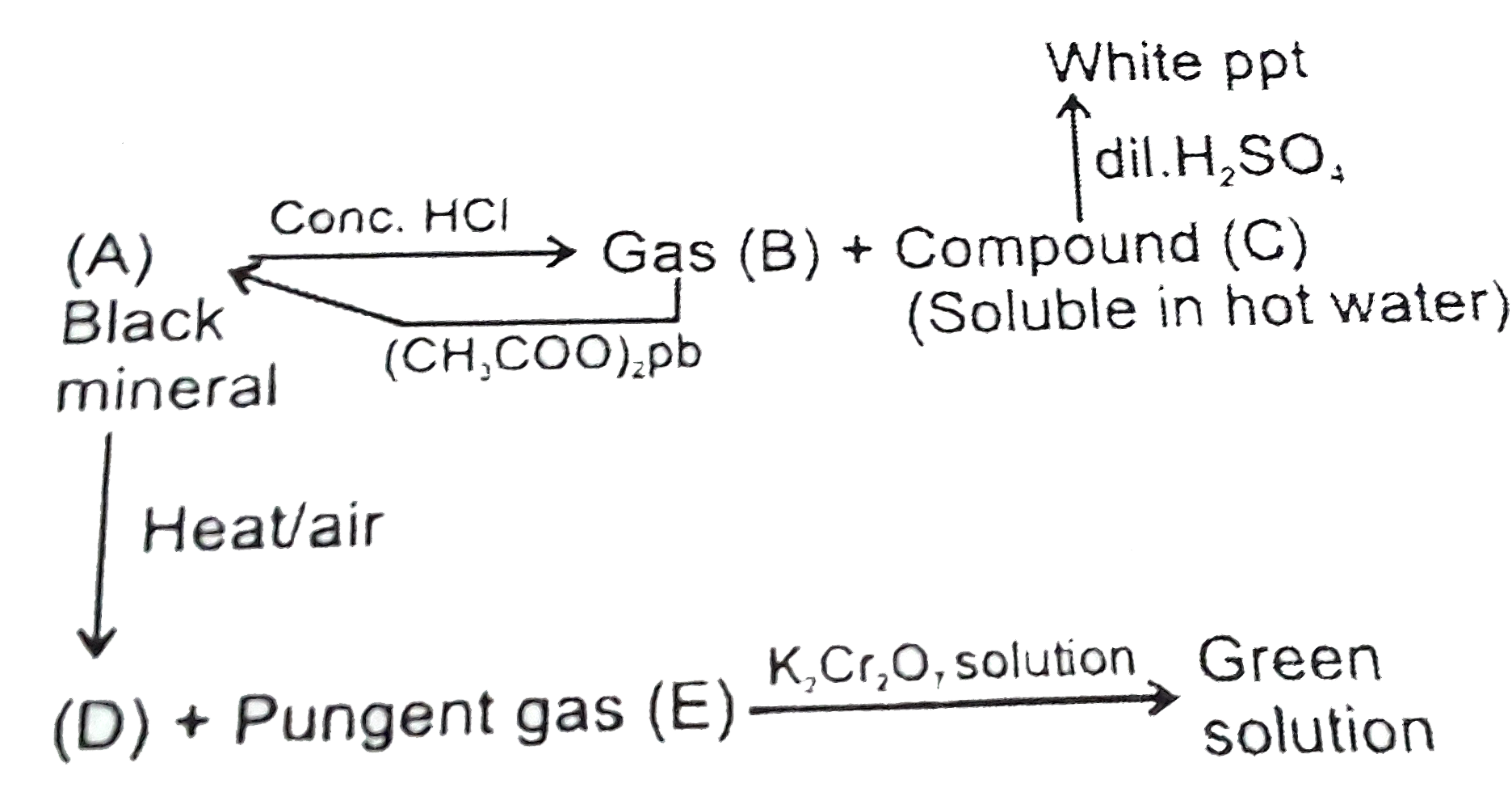An inorganic iodide (A) on heating with a solution of KOH gives a gas (B) and a solution of a compound. The gas (B) on ignition in air gives a compound (C ) and water. Copper sulphate is finally reduced to the metal on passing (B) through its solution.
What is true about gas (B) and compound (C ) ?
The oxidation number of central atom of gas (B) is
The gas (B) produces a black precipitate of methallic sliver with sliver nitrate solution.
Compound (C ) dissolves in water forming an acid which with solution hydroxide forms three series of salts.
(B) and (C ) both
To solve the question step by step, we need to identify the compounds A, B, and C based on the information provided in the question.
Step 1: Identify Compound A
The question states that an inorganic iodide (A) reacts with KOH to produce a gas (B) and a solution of a compound. A common inorganic iodide that fits this description is phosphonium iodide (PH₄I).
Step 2: Reaction of A with KOH
When phosphonium iodide (PH₄I) is heated with KOH, it produces phosphine gas (B) and potassium iodide (KI) as the solution of a compound.
Reaction:
PH4I+KOH→PH3+KI+H2O
Here, gas (B) is phosphine (PH₃) and the compound in solution is potassium iodide (KI).
Step 3: Identify Compound B
From the above reaction, we have identified gas (B) as phosphine (PH₃).
Step 4: Reaction of B on Ignition
The next part of the question states that gas (B) on ignition in air gives a compound (C) and water. When phosphine (PH₃) is burned in oxygen, it produces diphosphorus pentoxide (P₂O₅) and water.
Reaction:
4PH3+6O2→2P2O5+6H2O
Thus, compound (C) is diphosphorus pentoxide (P₂O₅).
Step 5: Reduction of Copper Sulfate
The question also mentions that copper sulfate is reduced to metal by passing gas (B) through its solution. Phosphine (PH₃) can reduce copper(II) sulfate (CuSO₄) to copper metal (Cu).
Reaction:
3CuSO4+2PH3→Cu3P2+3H2SO4
This confirms that gas (B) is indeed phosphine.
Final Summary
- Gas (B) is phosphine (PH₃).
- Compound (C) is diphosphorus pentoxide (P₂O₅).
Conclusion
Now, we can evaluate the statements regarding gas (B) and compound (C):
1. The oxidation number of the central atom of gas B (phosphine) is not +4; it is -3.
2. Gas B (phosphine) produces a black precipitate of metallic silver when reacting with silver nitrate.
3. Compound C (P₂O₅) dissolves in water forming phosphoric acid (H₃PO₄), which can react with hydroxides to form three series of salts.
Thus, the correct statements about gas (B) and compound (C) are:
- Gas B produces a black precipitate of metallic silver with silver nitrate.
- Compound C dissolves in water forming an acid which can form three series of salts with hydroxides.
The question states that an inorganic iodide (A) reacts with KOH to produce a gas (B) and a solution of a compound. A common inorganic iodide that fits this description is phosphonium iodide (PH₄I).
When phosphonium iodide (PH₄I) is heated with KOH, it produces phosphine gas (B) and potassium iodide (KI) as the solution of a compound.
PH4I+KOH→PH3+KI+H2O
From the above reaction, we have identified gas (B) as phosphine (PH₃).
The next part of the question states that gas (B) on ignition in air gives a compound (C) and water. When phosphine (PH₃) is burned in oxygen, it produces diphosphorus pentoxide (P₂O₅) and water.
4PH3+6O2→2P2O5+6H2O
The question also mentions that copper sulfate is reduced to metal by passing gas (B) through its solution. Phosphine (PH₃) can reduce copper(II) sulfate (CuSO₄) to copper metal (Cu).
3CuSO4+2PH3→Cu3P2+3H2SO4
- Gas (B) is phosphine (PH₃).
- Compound (C) is diphosphorus pentoxide (P₂O₅).
Now, we can evaluate the statements regarding gas (B) and compound (C):
1. The oxidation number of the central atom of gas B (phosphine) is not +4; it is -3.
2. Gas B (phosphine) produces a black precipitate of metallic silver when reacting with silver nitrate.
3. Compound C (P₂O₅) dissolves in water forming phosphoric acid (H₃PO₄), which can react with hydroxides to form three series of salts.
- Gas B produces a black precipitate of metallic silver with silver nitrate.
- Compound C dissolves in water forming an acid which can form three series of salts with hydroxides.
Topper's Solved these Questions
- P BLOCK ELEMENTSBook:RESONANCE ENGLISHChapter:P BLOCK ELEMENTSExercise:ALP EX #3 OBJECTIVE
Explore 1 Video
- P BLOCK ELEMENTSBook:RESONANCE ENGLISHChapter:P BLOCK ELEMENTSExercise:ALP PART 1 OBJECTIVE
Explore 100 Videos
- P BLOCK ELEMENTSBook:RESONANCE ENGLISHChapter:P BLOCK ELEMENTSExercise:PART -III : Match the column
Explore 2 Videos
- NUCLEAR CHEMISTRYBook:RESONANCE ENGLISHChapter:NUCLEAR CHEMISTRYExercise:STAGE-II
Explore 1 Video
- P-BLOCK ELEMENT (BORON AND CARBON FAMILY)Book:RESONANCE ENGLISHChapter:P-BLOCK ELEMENT (BORON AND CARBON FAMILY)Exercise:PART - III : OLYMPIAD PROBLEMS (PREVIOUS YEARS) STAGE - V (INTERNATIONAL CHEMISTRY OLYMPIAD (IChO)) Problem 3
Explore 8 Videos
Similar Questions
An inorganic iodide (A) on heating with a solution of KOH gives a gas (B) and a solution of a compound. The gas (B) on ignition in air gives a compound (C ) and water. Copper sulphate is finally reduced to the metal on passing (B) through its solution.
The compound (C ) :
View SolutionAn inorganic iodide (A) on heating with a solution of KOH gives a gas (B) and a solution of a compound. The gas (B) on ignition in air gives a compound (C ) and water. Copper sulphate is finally reduced to the metal on passing (B) through its solution.
Select the correct statement from the following for the gas (B).
View SolutionIdentify (A) to (E).
(a) An inorganic iodide (A) on heating with a solution of KOH gives a gas (B) and the solution of a compound (C).
(b) The gas (B) on ignition air gives a compound (D) and water.
( C) Copper sulphate is reduced to the metal on passing (B) through the solution.
(d) A precipitate of the compound (E) is formed on reaction of (C) with copper sulphate solution.
View SolutionIdentify (A) to (C).
(a) An inorganic iodide (A) on heating with a solution of KOH gives a gas (B) and the solution of a compound (C).
View Solution
Gas (B) on passing through CaSO4 solution will give
View Solution
Gas (B) on passing through cadmium acetate solution will give :
View SolutionA black mineral (A) on heating in presence of air gives a gas (B). (A) and (B) are respectively:
View SolutionA black mineral (A) on heating in presence of air gives a gas (B). The mineral (A) on reaction with dilute H2SO4 gives a gas (C) and a solution of a compound (D) on passing the gas (C) into an aqueous solution of (B), a white turbidity is obtained. The aqueous solution of (D) on reaction with potassium ferricyanide gives a blue compound (E). Identify (A) to (E) and give chemical equations for the reaction involved.
View SolutionAn inorganic compounds gives off O2 on heating. It also makes the colourless solution of potassium iodide to acquire purple tinge. The compound can be
View SolutionWhat do you observe when
HS gas is passed through copper sulphate solution.
View Solution